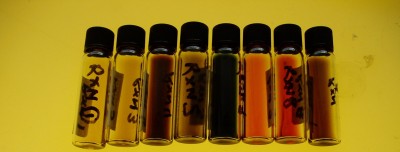The LJH group has a long-standing interest in catalysis and asymmetric transformations in particular. Our discovery that H-MOPH2 and MeO-MOPH2 are both optically pure, air-stable primary phosphines (Angew. Chem. Int. Ed., 2006, 51, 4921) led us to investigate their utility as valuable starting materials for tertiary phosphines with unusual stereoelectronic profiles that would be difficult to access by other routes.
Phosphiranes
Phoshiranes – three membered rings containing a phosphorus atom – were generally assumed to be thermally sensitive and unstable, however we have shown (Chem. Commun., 2011, 47, 8274) that MOP-phosphiranes can be refluxed in toluene overnight and left on the bench for several days without decomposition. We also prepared their platinum complexes and obtained their crystal structures (below), and found that we could achieve ees of 80% in non-optimised hydrosilylation reactions of styrene. Due to their aforementioned perceived instability, it is very rare to find examples of chiral phosphiranes in the literature.
Phosphonites
We have prepared novel phosphonites that are chiral at the MOP backbone and also contain a ligated chiral binol function. Despite a number of publications in high-ranking journals, rhodium-based MOP catalysis seems to have some limitations. In our examination of these complexes (Dalton, 2013, 42, 6302), we were able to find a novel coordination mode (below), where the rhodium binds both to the phosphorus and the binaphthyl ring – perhaps this limits the efficacy of these catalysts? In the same paper we synthesised the first iridium-MOP complexes too.




